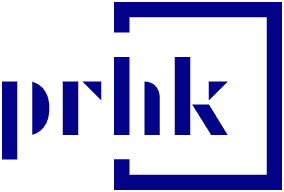PRHK Viewpoints: The future of work
The topics of hybrid workplace, remote working and future of work are familiar terms for anyone working in any company, at all levels. We’ve read news about early hybrid workplace adopters such as Apple and Google, while others like Twitter and Slack have opted for full remote work and flexibility. Even within the technology industry, and between hardware and software companies, there are difference in opinions and perspectives on what the future of work may look like in their respective organisations.
Speaking with clients and peers in the marketing and communications industry, looking at different market reports, news and opinion pieces, there’s no doubt that the hybrid work model is here to stay. A recent study conducted by Globalization Partners revealed that 63% of companies will make remote work a permanent fixture following the pandemic, while 12% reported that their organisations already have policies in place to support a hybrid work model.
How remote work policies and practices will impact operational efficiency, staff’s health and wellbeing, and shape our corporate culture have become priorities on management team’s agenda. While we can all agree that every company will adapt some form of hybrid work, even a crystal ball cannot give us answers on the best approach because there isn’t one. While it’s hard to imagine a production plant without human supervision or staff on the floor, for those in the marketing, communications and creative industry, reconstructing the workplace to embrace the hybrid approach is inevitable.
For companies and employers who are still trying to figure out the right hybrid work model, here are three conversations to have that could help shape the future of work in your organisations.
1. The relationship conversation
Building relationships and having human interactions are more important than ever especially in the marketing and communications business. Imagine scheduling a Zoom call with your colleagues two days in advance to brainstorm ideas for a client campaign versus grabbing a coffee and jamming ideas on a white board or tossing ideas around the pool table. While professional relationships can be built virtually, personal relationships and face-to-face interactions can go a long way in our line of work. Recall the last time you had a water cooler conversation that helped you solve a problem or sparked a creative idea for your next campaign.
Without group activities that help employees bond, there’s little reason for people to connect with each other outside of work conversations. The advantage of working in a creative agency is that we can be creative in how we become more attuned to the social and networking side of work that people need in the office. While we may see half-empty offices (or some empty seats) with the hybrid work model, we need to create meaningful engagements and team building activities that employees can look forward to and give them a reason to come back to the office, and mingle with their friends and colleagues. If people feel like they already work for a virtual company, they might as well join one.
2. The productivity conversation
The hybrid workplace isn’t just about remote working or considering employees’ needs. Ultimately, executives and management teams are making decisions based on performance and financial indicators. According to a study done by The Adecco Group, productivity has survived the shift, with 82% of employees feeling productive more than before. More workers and leaders are calling to be measured by outcomes rather than hours. However, in the marketing, communications and creative industry, efficiency and productivity can mean time spent to complete a task, the number of people required at different levels, managing quality standards, responding to changes throughout the project, and so on. In an industry where profitability is measured by billable hours, it is difficult to get rid of the timesheet and measure performance based solely on outcomes and deliverables. While quality of work and service remain priorities, executives and management teams also need to find ways to ensure profitability.
While many studies have pointed out that productivity increased during the pandemic in 2020, efficiency and productivity also depends on the specific actions that companies need to take to help employees thrive in any work environment (at home, in the office, or in a cafe). While performance and financial indicators are important, organizations should also look for ways to enhance efficiency and productivity such as investing in new technology and collaboration tools, as well as optimizing communal space to support collaboration and creativity in the hybrid work model.
3. The mental and physical health conversation
Referencing the 2021 Global Employee Survey by Globalization Partners, 48% of respondents said working remotely has positively impacted their perception (i.e., they feel happier about work and their jobs). Employees wanting good work-life balance, to be a part of a team, and having the right tools and equipment for the job were at the top of the list when it comes to a positive remote working experience. In addition, having access to tools and documents remotely (and within a secured IT environment), and streamlining the submission process for expenses, leave requests and timesheets are ways that companies could make the experience easier for employees.
By providing employees with access to healthy snack options in the office or encouraging them to make time for the gym are not difficult tasks for managers. For those who have family and childcare responsibilities, the hybrid work model enables them to find the right work-life balance. More importantly, employees’ wellbeing has a direct impact on talent acquisition and retention. Flexible work arrangements and how leaders cope with changes amid the pandemic have become key factors for candidates when choosing a new a job in 2021 and beyond.
Ways to approach these conversations:
1. Be inclusive: Involve your employees, team leaders and the operations team in the discussion.
2. Be fair: Strike a balance between employee’s wish list and what’s realistic for the business, operation and clients.
3. Be brave: Start somewhere, observe and learn, refine your policies over time.
This piece was written by Kevin On, General Manager, The Hoffman Agency. PRHK Viewpoints is an article series contributed by members of PRHK, Hong Kong’s PR & communications association.

